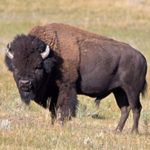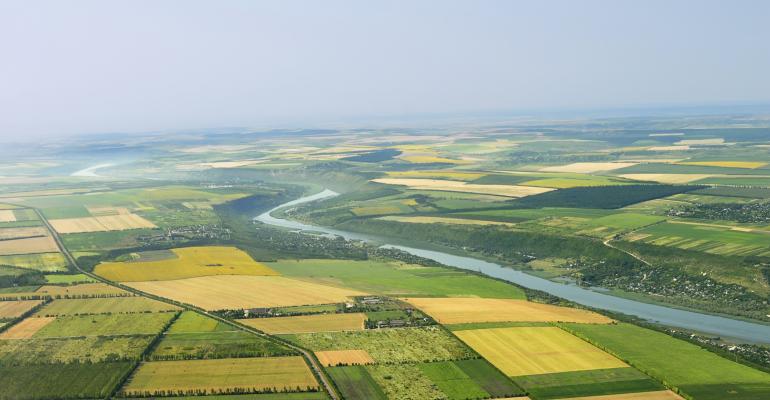A talented Oregon blogger named Andy Kerr recently posted an eloquent piece called “Where the Buffalo Roam,” extoling the virtues of the “American Prairie Reserve,” a giant conservation project underway in Montana. He mentions the folk song, “Home on the Range,” with an interesting observation. It recalls a nostalgic view of ranching life on the prairie, yet does not mention cattle. Indeed, the only three animals in the song’s lyrics are buffalo, deer, and antelope.
 Because it’s a very old song, the implication is that we always knew the prairie was better when occupied only by buffalo (as if there were ever such a time). The political agenda is obvious enough, though the writer’s reputation also precedes him – he is a fairly well-known environmental industry activist who has filed numerous lawsuits seeking various restrictions on public land uses.
Because it’s a very old song, the implication is that we always knew the prairie was better when occupied only by buffalo (as if there were ever such a time). The political agenda is obvious enough, though the writer’s reputation also precedes him – he is a fairly well-known environmental industry activist who has filed numerous lawsuits seeking various restrictions on public land uses.
Nevertheless, there is much to admire about the process creating the reserve in Montana. The goal is to consolidate 5,000 square miles (3.5 million acres) of ranchlands into one contiguous grassland, without fences, as habitat where American Bison thrive – where the deer and the antelope play. It is near the Charles M. Russell National Wildlife Refuge and the Upper Missouri River Breaks National Monument, yet creating a reserve that large also requires buying hundreds of thousands of acres of private ranchlands, along with their public land grazing permits. About 90,000 acres have already been purchased, linked with another 300,000 acres of grazing permits.
The American Prairie Reserve buys ranches from willing sellers, pays the property taxes, and continues to pay the fees for their grazing permits. If conservation is the priority, that is a common way to go about it, just as land trusts in Colorado and elsewhere have spent millions acquiring conservation easements on working ranches. That respects private property, paying fair market value for investments made by generations of ranch families. And in this case, growing wildlife populations show that it is working.
So what’s not to like about this rational, measured approach to conservation? Just one small detail, at least for me. I like to eat. I inherited that habit honestly, coming from a long line of ancestors who liked to eat. To this day, I still have several friends who like to eat, too.
All of the lands acquired for this buffalo reserve will eventually be retired from ranching, ending generations of livestock production on a gigantic swath of land – enough to have a significant effect also on the farmers who produce feed and grain, and on rural communities dependent on agriculture. I know it’s just one part of Montana. It is a large part, but even so, it may be considered an acceptable economic upheaval, a reasonable price to pay for re-establishing a chunk of America’s lost prairie, once teeming with bison. But how large a chunk?
You might wait for the proponents of this successful reserve to say, “There, that should do it.” You would wait in vain. Even a set-aside of the 5,000 square miles of Montana is considered by its proponents as little more than “a good start.” In truth, it is part of a larger and much older scheme called the “Buffalo Commons.” It was proposed in the 1980s by a New Jersey professor who thinks farming and ranching on the Great Plains is “unsustainable,” and therefore should be replaced by the original dry grassland wilderness. His essay advocated depopulating 139,000 square miles of Montana, Wyoming, Colorado, Oklahoma, New Mexico, Texas, Kansas, Nebraska, and the Dakotas. All the vacated cities and towns would be replaced by giant buffalo herds. The professor could afford to be sanctimonious about it, because it would not affect his home in New Jersey – or so he assumed. It most certainly would affect the grocery stores there, and everywhere. He never imagined how it might reduce the availability of food in the stores, or cause the prices to soar.
It is fascinating for someone to think human use of these lands can be sacrificed without consequence, especially considering that Middle America is the bread basket that supplies vast quantities of food to the entire United States, and much of the rest of the world. That includes most of America’s beef, for those of us who cannot live by bread alone.
I love buffalo, too, by the way, though most of these advocates do not envision a giant buffalo ranch supplying meat for our tables. They might prefer we all eat tofu and wheat germ (though without Great Plains agriculture it is unclear where we might get that, too). Still, Americans are justifiably proud that the buffalo were saved from extinction, and mostly support efforts to establish portions of their former habitat. But the entire Great Plains? That is simply not realistic in a country of 325 million people, all of whom need to eat. It is a pipedream for people whose skies are not cloudy all day.
An edited version of this column appeared in the Grand Junction Daily Sentinel February 8, 2019.





Comments on this entry are closed.